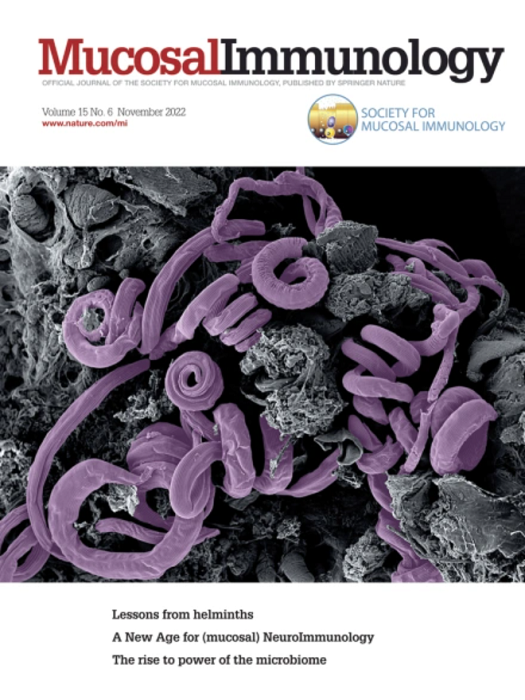抗生素引起的眼部微生物群失调影响小鼠角膜昼夜节律活动。
IF 7.6
2区 医学
Q1 IMMUNOLOGY
引用次数: 0
摘要
眼表微生物群在维持角膜稳态中起关键作用,但其破坏及其对角膜功能的后续影响尚不清楚。本研究探讨抗生素诱导的微生物消耗如何影响C57BL/6J小鼠角膜昼夜节律转录组。使用局部抗生素鸡尾酒诱导生态失调,并采用RNA测序分析24 h内8个时间点的基因表达。抗生素治疗破坏了角膜的昼夜节律,消除了1,812个基因的节律性,并引入了1,928个先前心律失常的基因的节律性。此外,上皮粘附受损,炎症升高,神经敏感性降低。超过50% %的眼部微生物属表现出每日振荡,其中6属与角膜节律转录物有显著相关性。此外,TLR激动剂恢复了昼夜节律基因表达模式,部分恢复了角膜屏障功能和免疫稳态,进一步强调了微生物群靶向治疗眼表疾病的潜力。这些发现强调了眼部微生物群在调节角膜健康中的关键作用,并提示通过激活TLR恢复微生物平衡可能为眼病的治疗提供新的途径。本文章由计算机程序翻译,如有差异,请以英文原文为准。
Antibiotic-induced dysbiosis of the ocular microbiome affects corneal circadian rhythmic activity in mice
The ocular surface microbiota plays a critical role in maintaining corneal homeostasis, but its disruption and subsequent effects on corneal functions remain poorly understood. This study investigates how antibiotic-induced microbial depletion affects the corneal circadian transcriptome in C57BL/6J mice. Dysbiosis was induced using a topical antibiotic cocktail, and RNA sequencing was employed to analyze gene expression across eight time points over 24 h. Antibiotic treatment disrupted corneal circadian rhythms, eliminating rhythmicity in 1,812 genes and introducing rhythmicity in 1,928 previously arrhythmic genes. Furthermore, epithelial adhesion was impaired, inflammation was elevated, and neural sensitivity was reduced. More than 50 % of ocular microbial genera exhibited daily oscillations, with six genera showing significant correlations with corneal rhythmic transcripts. Additionally, the administration of TLR agonists restored circadian gene expression patterns, with partial recovery of corneal barrier function and immune homeostasis, further highlighting the potential of microbiota-targeted therapies in treating ocular surface disorders. These findings underscore the critical role of the ocular microbiota in regulating corneal health and suggest that restoring microbial balance via TLR activation may offer new therapeutic avenues for eye diseases.
求助全文
通过发布文献求助,成功后即可免费获取论文全文。
去求助
来源期刊

Mucosal Immunology
医学-免疫学
CiteScore
16.60
自引率
3.80%
发文量
100
审稿时长
12 days
期刊介绍:
Mucosal Immunology, the official publication of the Society of Mucosal Immunology (SMI), serves as a forum for both basic and clinical scientists to discuss immunity and inflammation involving mucosal tissues. It covers gastrointestinal, pulmonary, nasopharyngeal, oral, ocular, and genitourinary immunology through original research articles, scholarly reviews, commentaries, editorials, and letters. The journal gives equal consideration to basic, translational, and clinical studies and also serves as a primary communication channel for the SMI governing board and its members, featuring society news, meeting announcements, policy discussions, and job/training opportunities advertisements.
 求助内容:
求助内容: 应助结果提醒方式:
应助结果提醒方式:


